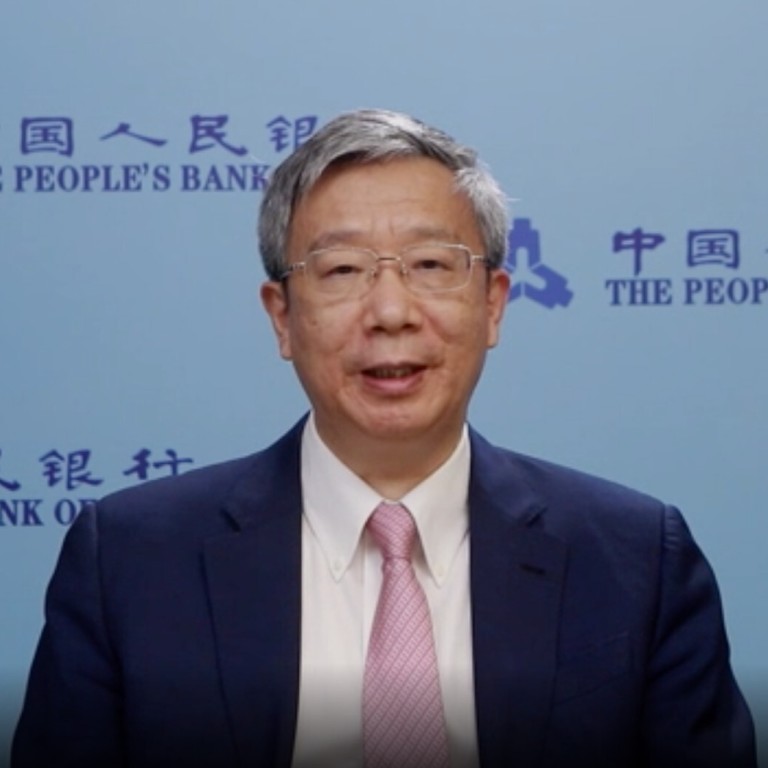
China’s yuan risks ‘skewed towards further weakness’ as Beijing seeks to shore up economy under zero-Covid strategy
- The yuan has depreciated by more than 1 per cent this week and by nearly 2 per cent this month, with policymakers concerned with stabilising prices and employment
- The onshore yuan weakened past 6.49 per US dollar for the first time since August, closing at 6.4875 on Friday
Beijing’s preoccupation with domestic issues has fuelled speculation of further yuan weakness and volatility, with economic disruption continuing amid China’s zero-Covid strategy and a looming rate increase by the US Federal Reserve next month.
The Chinese currency had already reported a significant weakening this week, with its official midpoint set 0.8 per cent lower at 6.4596 per US dollar on Friday, which was already the lowest since October.
“The greater elasticity of the yuan exchange rates in recent years has effectively and timely eased external pressure,” Wang Chunying, deputy head of the State Administration of Foreign Exchange, said on Friday.
“As companies become more rational in [foreign exchange] settlements, it will help the overall stability of yuan exchange rates and the stable operation of the [foreign exchange] market.”
The risks to the currency remain skewed towards further weakness in the near term
The offshore spot rate was reported at 6.53 per US dollar on Friday evening, while the onshore rate weakened past 6.49 for the first time since August. The onshore rate closed at 6.4875 on Friday.
“In our view, the risks to the currency remain skewed towards further weakness in the near term,” said Jingyang Chen, HSBC’s Asian FX strategist.
“High frequency data in April has suggested severe supply chain disruptions caused by the virus containment measures in the Yangtze River Delta region, which accounts for almost a quarter of China’s [gross domestic product].”
People’s Bank of China governor Yi Gang did not mention the yuan exchange rate during a speech to the Boao Forum for Asia on Friday morning, but highlighted accommodative policy support for small and medium-sized businesses and vulnerable groups.
“The primary objective of China’s monetary policy is stabilising prices,” he said.
“Once grain production and energy supply can be guaranteed, price levels will be stabilised in a reasonable range.”
In separate comments delivered at a meeting of the International Monetary and Financial Committee on Thursday, Yi included stable employment as another key policy objective.
China sees ‘unprecedented’ capital outflows after Russia invades Ukraine
Analysts expect further depreciation of the yuan against the US dollar, and that investors may continue to sell off Chinese stocks.
“Until markets see the colour of China’s money, China equities will remain challenged and 6.5000 looks set to arrive for [the US dollar-yuan exchange rate] much sooner than I expected,” said Jeffrey Halley, a senior market analyst at foreign exchange firm Oanda.
Beijing has long focused on maintaining the basic stability of yuan exchange rate and two-way fluctuations, but it also mentioned the use of its elasticity to absorb external shocks.
If our macroeconomy is unstable, the large-scale rate hikes of the Fed could cause a big problem for investor sentiment and confidence,
Huang Yiping, a Peking University professor and a former central bank adviser, said the US Federal Reserve tightening will exert pressure on China and squeeze its room for loosening.
The impact, however, will depend on China’s financial health and economic stability.
“If our macroeconomy is unstable, the large-scale rate hikes of the Fed could cause a big problem for investor sentiment and confidence,” he said on the sideline of the Boao Forum on Thursday.


